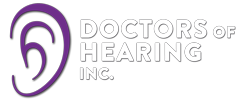Below is an overview of some of the things we do to help you with your hearing.
Tests we do in our office to fit hearing aids are as follows:
- Otoscopy inspection: We check our patient’s ear canals to make sure the ear is clear of wax or to rule out other visible problems. The hearing evaluation cannot be completed if you have impacted wax in your ears. WE NEED ACCURATE MEASUREMENTS OF YOUR EAR AND EAR CANAL.
- Real ear measurement is an objective method we use to verify the programming fit of the hearing aids. Individual ears are very different from one patient to the next, and those differences have a major effect on the benefit a hearing aid provides to the wearer. The only way to account for those individual ear differences is to take a physical measurement of how the hearing aid is amplifying sound and with real ear measurements, we can achieve this. According to the hearing review, it increases the accuracy of the hearing aid fitting and simplifies the task of verifying aukidsdibility. With this test, we can make sure that soft sounds are audible, and loud sounds are comfortable.
- UCL’s purpose is to find the level at which the patient feels the sound has become uncomfortably loud (these levels are important when programming hearing aids), UCL’s are also important to identify those who suffer from sensitivity to sounds.
- MCL’s purpose is to find the level at which the patient feels the sound is most comfortable.
Aided testing (test you with hearing aids to determine benefit from hearing aids). - In-situ Audiogram: According to the hearing review “The use of sensor-grams or in-situ thresholds increases the accuracy of the hearing aid fitting and simplifies the task of verifying audibility” The sensorgram is the hearing thresholds of a hearing-impaired person measured with his/her hearing aids (and ear molds if the patient wears a behind the ear hearing aid) inside the ears (i.e., in-situ). The measured values are used by the fitting software to generate the target gain (or input-output characteristics) by the specific hearing aid.
- Tinnitus testing if needed (to find the frequency that is most closest to the one patient hears to be able to provide a patient with a tinnitus program that might help with their tinnitus).
- Tympanometry testing as needed with repeated audiograms (comprehensive hearing test). If patients complain of muffled hearing, we check the status of the middle ear prior to hearing aid adjustments).




